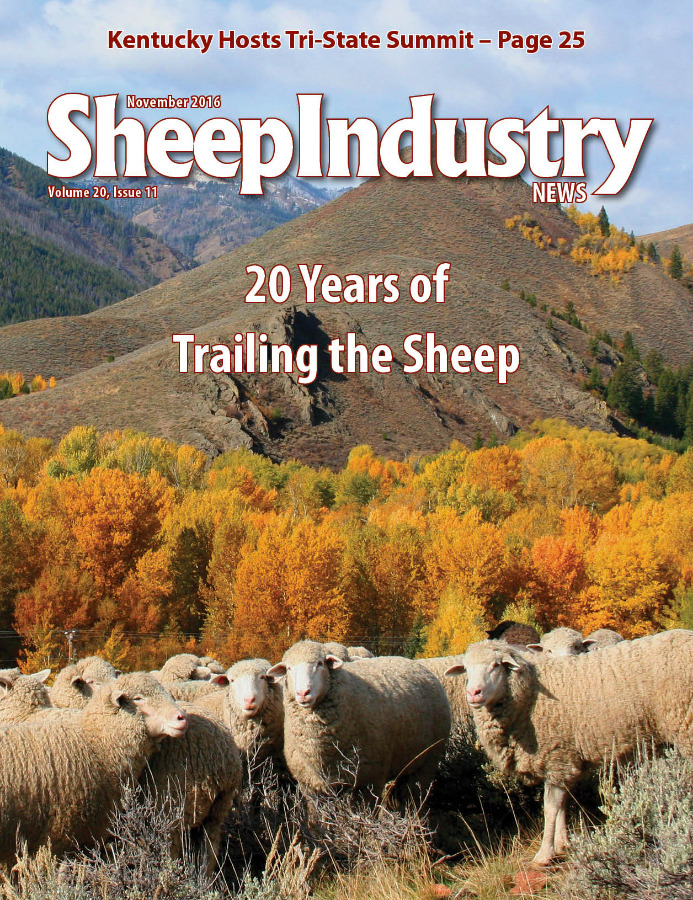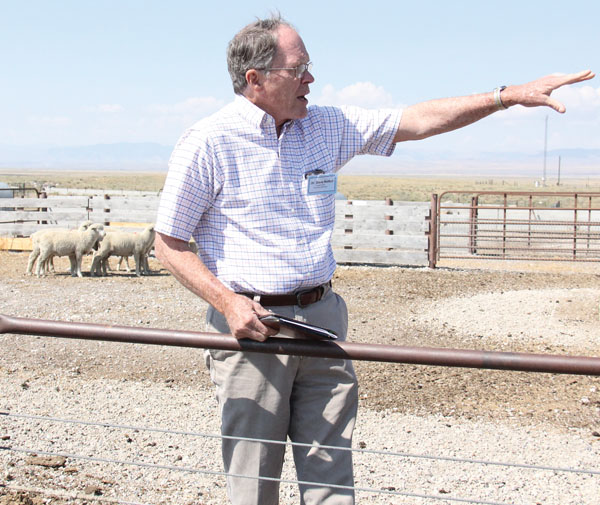
- November 2016
- President’s Notes
- Better Genetics Equals More Profit
- Thomans Concede Allotments
- 20 Years of Trailing the Sheep
- Celebrating Fall at Savage Hart Farm
- New Staff, Consultants on ASI Payroll
- ASI News
- Tri-State Summit Celebrates Growth
- Young Entrepreneur: Matt Anderson
- Knowles Named to Scientific Panel
- Range Productivity Study Complete
- USDA Confirms Screwworm in Florida
- Market Report
- Obituary
Range Productivity Study Complete
A research study comparing ewe productivity of Polypay, Rambouillet and ¼ Romanov x ¼ Dorper x ½ Rambouillet breed types in a rangeland production system was recently completed at the U.S. Sheep Experiment Station.
 Being eager to get the results of the study into the hands of those who can use the information, the researchers have prepared and are making available a summary of the study prior to moving the paper on to peer-reviewed venues.
Being eager to get the results of the study into the hands of those who can use the information, the researchers have prepared and are making available a summary of the study prior to moving the paper on to peer-reviewed venues.
Researchers involved in the study include Drs. Dave Notter, Michelle Mousel, Kreg Leymaster, Greg Lewis and J. Bret Taylor.
“Many producers have inquired as to the findings of this study,” said Taylor, research leader at the USSES in Dubois, Idaho. “For this reason, we have prepared and are making available a summary of our conclusions for the industry to review.”
In cooperation with Virginia Tech and the U.S. Meat Animal Research Center, ewe lambs of the three-breed types were enrolled in a four-year project where the cumulative production of the ewes was measured in a rangeland, commercial-scale production system. The productivity of 212 Rambouillet, 236 Polypay and 231 Romanov-White Dorper x Rambouillet-crossbred ewes born in 2009, 2010 and 2011 was evaluated through four lambings. Beginning as lambs, study ewes were managed in a range-type production system, annually mated to terminal-sire type rams and evaluated for multiple measures of ewe productivity.
The conclusion of the study indicates that Polypay and Romanov-White Dorper x Rambouillet ewes weaned a substantially greater weight and number of lambs than did the Rambouillet ewes. Romanov-White Dorper x Rambouillet ewes weaned a modestly greater weight and number of lambs than the Polypay ewes. The semi-prolific Polypay and Romanov-White Dorper x Rambouillet ewes benefitted from additive breed effects and hybrid vigor that favored better ewe-lamb performance and a greater number of lambs born per ewe at all ewe ages.
The summary paper with the study methods and full findings is available through the ASI website at Sheepusa.org/ResearchEducation_OtherResearch_ProductivityOfEwesOnRange.

